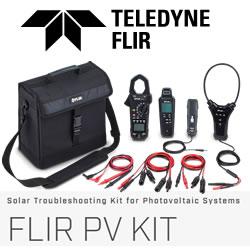Home Energy Storage Systems: The Next Big Wave in Decentralized Energy
According to Precedence Research, the global home energy storage systems (HESS) market is entering a high-growth phase, expanding from USD 3.08 billion in 2025 to USD 6.89 billion by 2034, reflecting a healthy CAGR of 9.35%. This surge is driven by three converging forces: rising grid instability, a global push for renewable energy adoption, and rapid advancements in battery technology.
North America currently leads the market with a 45% share, thanks to strong government incentives and grid modernization programs. However, the Asia-Pacific region is emerging as the fastest-growing market, fueled by urbanization, renewable energy mandates, and energy independence policies in countries like China, India, and Japan.
"Home energy storage is no longer a luxury—it's becoming the backbone of the modern renewable home," notes an energy analyst from the International Renewable Energy Agency (IRENA).
Renewables Integration and the Rise of Energy Independence
Homeowners across the world are rethinking how they consume and store energy. With increasing electricity demand and growing solar installations, energy storage is bridging the gap between generation and reliability.
Residential users can now store excess solar energy generated during the day and deploy it when sunlight fades or during grid outages. This not only enhances energy security but also significantly reduces electricity costs, creating a compelling economic case for adoption.
In markets like California, Germany, and Australia, government incentives and tax credits have accelerated residential storage installations. For instance, the U.S. Inflation Reduction Act offers a 30% federal tax credit, while Australia provides rebates up to A$1,300 under new state energy programs.
Battery Technology: From Lithium-Ion Dominance to Sodium-Ion Disruption
In 2024, lithium-ion batteries held roughly 70% of the global market share, thanks to their high energy density, efficiency, and long lifecycle. However, the market is undergoing a technological transition.
Emerging sodium-ion batteries are attracting attention as a lower-cost, safer, and more sustainable alternative. They rely less on critical minerals like lithium and cobalt and perform effectively across wider temperature ranges. This makes them especially suited for frequent charge-discharge cycles—a hallmark of residential energy systems connected to intermittent renewables like solar.
"Sodium-ion chemistry could become the defining innovation of the next decade," predicts a senior researcher at BloombergNEF, "particularly as cost reduction aligns with scaling solar-plus-storage projects."
At the same time, the race toward solid-state batteries promises even greater safety, energy density, and durability, further lowering the total cost of ownership for homeowners.
AI and Smart Energy Management
Artificial Intelligence (AI) is redefining how home energy storage systems operate. Advanced AI algorithms are enabling dynamic energy forecasting, real-time optimization, and predictive maintenance.
Smart energy management systems now predict renewable generation patterns and optimize when to buy, store, or release energy based on grid prices. This capability transforms a household battery from a passive storage unit into an intelligent energy trading asset.
AI also plays a crucial role in battery health diagnostics, extending lifespan through adaptive charging strategies and preemptive fault detection.
This integration of digital intelligence is paving the way for Virtual Power Plants (VPPs) decentralized energy networks that aggregate home batteries into grid-level assets. VPPs enhance grid stability, unlock new revenue streams for homeowners, and support the broader decarbonization of energy systems.
Market Segmentation: Powering Homes of All Sizes
By Capacity: The 10-20 kWh segment leads the market with a 40% share, as it aligns with typical residential backup needs and peak load management. However, >20 kWh systems are expected to grow fastest as costs decline and demand for long-duration backup rises.
By Connectivity: On-grid systems dominate with 60% share, while hybrid systems—which combine grid, solar, and battery backup—are expected to see the most significant growth through 2034.
By End User: Single-family homes remain the largest segment (55% share), driven by rooftop solar adoption. Meanwhile, multi-family housing is emerging as a fast-growing segment, especially in dense urban areas where shared energy systems are being tested.
Regional Outlook: Global Hotspots of Growth
North America
The U.S. market alone was valued at USD 0.96 billion in 2024 and is expected to more than double to USD 2.40 billion by 2034. Federal incentives like the Investment Tax Credit (ITC) and state-level programs such as California's SGIP continue to propel adoption.
Grid modernization projects and frequent climate-induced outages further strengthen demand for resilient residential systems.
Europe
Germany remains the European leader, supported by KfW loans, net-metering incentives, and strict technical standards for battery integration. The U.K. has reinforced growth with VAT exemptions for home battery systems and the Smart Export Guarantee (SEG), rewarding users for exporting stored energy.
Asia-Pacific
Expected to grow at the fastest CAGR through 2034, the region's expansion is anchored by China's 30 GW energy storage target by 2025 and India's ₹5,400 crore viability gap funding (VGF) for new BESS projects. Japan's GX Transition Bonds and aggressive decarbonization initiatives further underline Asia's pivotal role in shaping global energy storage trends.
Investment and Industry Momentum
Private equity and utility companies are investing heavily in home storage technologies. Giants like Tesla (Powerwall 3), LG Energy Solution (enblock S+), and BYD (Battery-Box HVB) are joined by emerging European innovators such as Sonnen and software-driven platforms like Enphase Energy.
Investors are particularly attracted by the dual value proposition: growing consumer demand for energy independence and the opportunity to participate in decentralized grid stabilization via VPPs.
Toward a Smarter, Decentralized Future
As the world edges toward a decentralized, AI-enabled energy economy, home energy storage systems are set to become a mainstream household technology. The convergence of battery innovation, digital intelligence, and renewable generation is transforming how homeowners interact with energy—turning them from passive consumers into active participants in the energy ecosystem.
By 2034, the global market will not only double in value but also redefine what it means to be energy independent—where every home can generate, store, and manage its own clean power.
Dive into the full analysis here: https://www.precedenceresearch.com/home-energy-storage-systems-market
Featured Product

